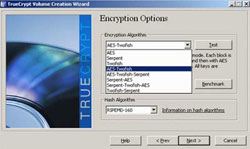Good habits for computer users
 Many people chat and write blogs and still finish their work because they have applied some basic principles to not be flooded with hundreds of new e-mails, hard drives full of misery because they forgot to copy the data in PC at home to the company.
Many people chat and write blogs and still finish their work because they have applied some basic principles to not be flooded with hundreds of new e-mails, hard drives full of misery because they forgot to copy the data in PC at home to the company.
Remote PC access
With free software like LogMeIn or TightVNC, people can sit at work and log in at home (or vice versa if the company network doesn't have a firewall) to read / send e-mail or open any file. they want to. Even the iPhone has the same application support as Mocha VNC or Teleport.
Take advantage of keyboard shortcuts
Users will work faster and more efficiently in keystrokes such as Ctrl-C (copy information), Ctrl-V (paste data), Ctrl-S (save data), Ctrl-T (open new tabs in Firefox, IE) . They can also launch applications, zoom in and out of image / font size, move files . without using a mouse. Refer to Wikipedia's shortcut system.
 Clean up your inbox every day
Clean up your inbox every day
Every day, you should also take a few minutes to delete unnecessary e-mails, such as Yahoo 360, Flickr, Facebook reminders . and sort messages into separate folders to quickly find them. when needed.
Sign up for a reminder service
Busy work makes people sometimes forget what to do. At that time, they should use the reminder tools available in phones, desktop stickers, files on the desktop or online task management websites like Remember the Milk .
Remember using the camera on your phone
The majority of phones today support imaging features. Therefore, when you want to remember a certain information, such as data on tickets, business cards, bottles, signs . users only need to take a picture with the phone instead of losing the time to copy the paper . Currently on the web there are many services to transfer digital photos into PDF files such as ScanR.
Encrypt confidential files
 Everyone has a few folders that contain personal information such as photos of children, lovers, competitors, colleagues . and don't want others to accidentally see it. Encryption software like TrueCrypt will help them set the password for the file so that it does not fear revealing important data if the device is lost.
Everyone has a few folders that contain personal information such as photos of children, lovers, competitors, colleagues . and don't want others to accidentally see it. Encryption software like TrueCrypt will help them set the password for the file so that it does not fear revealing important data if the device is lost.
Look up effectively
In order to avoid rare search engines displaying hundreds of thousands of mixed results, users should place keywords in quotation marks and add accents between words. Or when searching in e-mail, add from :, to :, subject :, example from: "Bill Gates" subject: "dinner date".
Backup hard drive
Users sometimes encounter "catastrophic" loss of documents when the hard drive is damaged, stolen . You should record important files to DVD or store online through free services, in which FileSarv allows uploading files up to 10 GB in size (highest on the Internet today) or FileDropper to support posting files of 5 GB size .
You should read it
- 8 extremely bad habits in the morning make you tired all day
- 8 extremely bad habits will 'ruin' you in 2019
- 8 good habits to help you succeed in all areas
- 25 good habits to start a new day full of energy
- 5 dangerous habits of 'killing' the dream of life that you should quit immediately
- You think this is bad, science is a genius
- If you keep these 10 habits, you will never get rich!
- 10 good habits you should do before 10 am
May be interested
- 11 bad habits that affect health that we need to fix right away
 everyone has these habits but do not know that they can cause serious harm or degradation of the body. check how many bad habits you have in the following 11 unhealthy habits to improve today!
everyone has these habits but do not know that they can cause serious harm or degradation of the body. check how many bad habits you have in the following 11 unhealthy habits to improve today! - 30 minutes every night for good sleep and energetic morning
 every night, you only need to spend 30 minutes to practice the following habits, all stress and anxiety will be released. you also sleep better and wake up in a refreshing mood like never before.
every night, you only need to spend 30 minutes to practice the following habits, all stress and anxiety will be released. you also sleep better and wake up in a refreshing mood like never before. - 5 smart living habits that help you do what you want
 consistency is the core. you can't be stronger or faster just by going out to the gym.
consistency is the core. you can't be stronger or faster just by going out to the gym. - Things to do after 5pm to help you detox well the next morning
 these small, practical evening changes can help you have a smoother morning and more regular bowel movements naturally.
these small, practical evening changes can help you have a smoother morning and more regular bowel movements naturally. - Establish 11 useful technology habits for 2018
 these are technological habits you may have forgotten, unaware of or overdoing in the past year. therefore, learn for yourself and change these habits to make your life easier.
these are technological habits you may have forgotten, unaware of or overdoing in the past year. therefore, learn for yourself and change these habits to make your life easier. - 6 bad habits can eliminate success
 in life, habits are what help us grow. however, sometimes these same habits are the cause of repelling your success.
in life, habits are what help us grow. however, sometimes these same habits are the cause of repelling your success. - 10 tech habits you should have
 maybe you've heard people tell you to back up computer data or you need to have a more secure password. good technology habits are not just for geeks, they can save you money, keep your personal information safe.
maybe you've heard people tell you to back up computer data or you need to have a more secure password. good technology habits are not just for geeks, they can save you money, keep your personal information safe. - 6 bedtime habits of extremely successful people
 the secret of successful people is to form good discipline and habits in daily life. let's learn about the 6 bedtime habits of extremely successful people in this article!
the secret of successful people is to form good discipline and habits in daily life. let's learn about the 6 bedtime habits of extremely successful people in this article! - Stop these 4 bad habits that slow down your laptop!
 if you're not careful, you can pick up some really bad habits that can slow down your laptop and make it difficult to use.
if you're not careful, you can pick up some really bad habits that can slow down your laptop and make it difficult to use. - Experience using Laptop and bad habits should be removed
 share good laptop usage experiences that you should know and apply. change bad habits when using laptops to make the computer more durable and stable ...
share good laptop usage experiences that you should know and apply. change bad habits when using laptops to make the computer more durable and stable ...










 'Supermodel' on Catwalk PC
'Supermodel' on Catwalk PC Google Chrome is 'cloud operating system'
Google Chrome is 'cloud operating system' 20 remarkable points of Google Chrome
20 remarkable points of Google Chrome IE 8 - 'RAM-hungry machine'
IE 8 - 'RAM-hungry machine' The most interesting mysteries in Firefox 3
The most interesting mysteries in Firefox 3 Yahoo already has a 360-degree turning tool for 360plus
Yahoo already has a 360-degree turning tool for 360plus